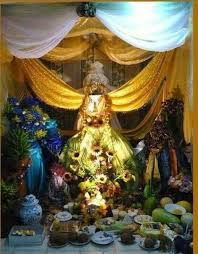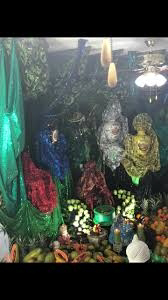Orò = Oru in Cuba
It is interesting that Orisha Orò’s cult survived the Middle Passage and is still worshipped among the Lukumí in Cuban Santeria.
The Cuban colonial context left no room for the political functions of the Orisha. His cult is devotional, secretive and mostly in the hands of the babalawo, Ifá-diviners.
His ìlèkè, the beaded necklace, is completely black. Women are also excluded completely not to be harmed by the virile powers.
Cubans call Orò intheir Lukumí dialect Oru, Orun, Oro or even Orus (Horus) – see also theYorùbá Guide to Lukumí in this blog. Omo Oru have a close relationship withikú, the death,eégún, the ancestors andòru, the night time, in their spiritual work and perform efficient chanted invocations supported by his power and sacred tools.
Fernando Ortiz, the famous ethnographer, still witnessed the sounding of bullroarers in Afrocuban funeral rites around 1950.
The small bull-roarer ajá Orò, Orò’s dog, in Cuba became the ẹjaOrò or Luk.eyá Oru, literally Orò’s fish. It is not far from Luk.ayá(dog) toeyá(fish).
Ortiz described in his influential books the “pesciform” bullroarer, what might have influenced the Santeria priests to carve them in the form of a fish today.
Various other forms of miniature bullroarers can be bought in the Botanicas as "Oru set" for babalawo today, see the links below. Its sound is enforcing the spiritual powers of the devotee initiated into the Orisha's cult.
Elements of Yorùbá Egúngúnworship also have been included into Cuban Oru worship as well. I found this especially interesting, as usually the common opinion is thatEgúngúncult and ancestor worship was substituted by the Espiritismo in Cuba. So this would be worth some more research.
Michael Marcuzzi,ìbà’ẹ, wrote an elaborate study of the bullroarer cult in Cuba, that leaves hardly any questions.In his study he focuses on various levels on the Yorùbá roots of Lukumí words, the influence of academic literature on the worship and is mentioning many details, speaking about the rites, Oru’s tools, pots, switches and even transcribed Lukumí songs for Oru.










.jpg)